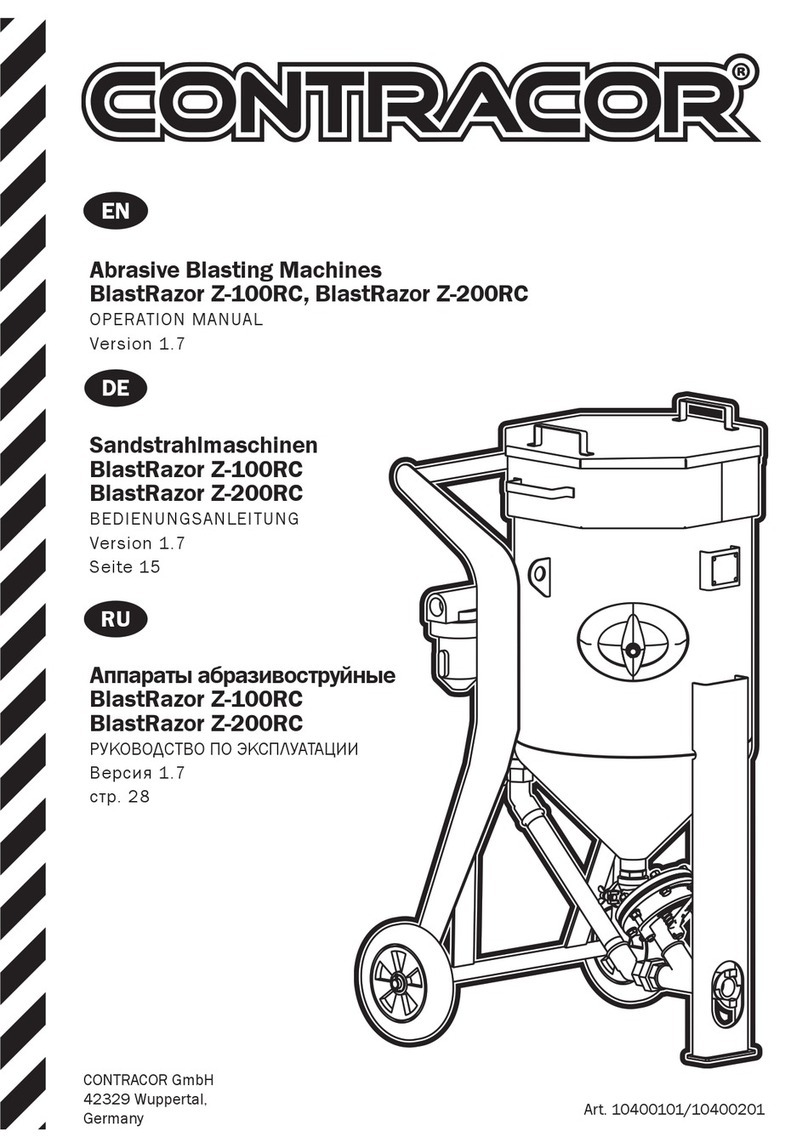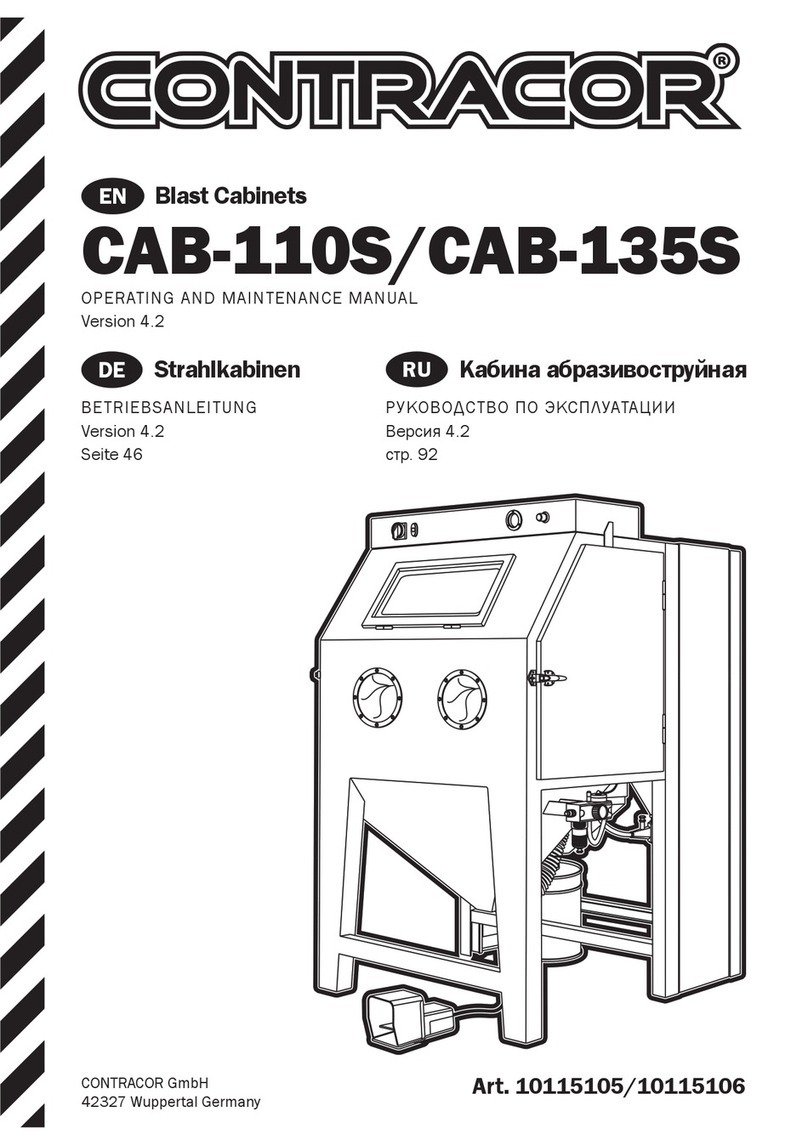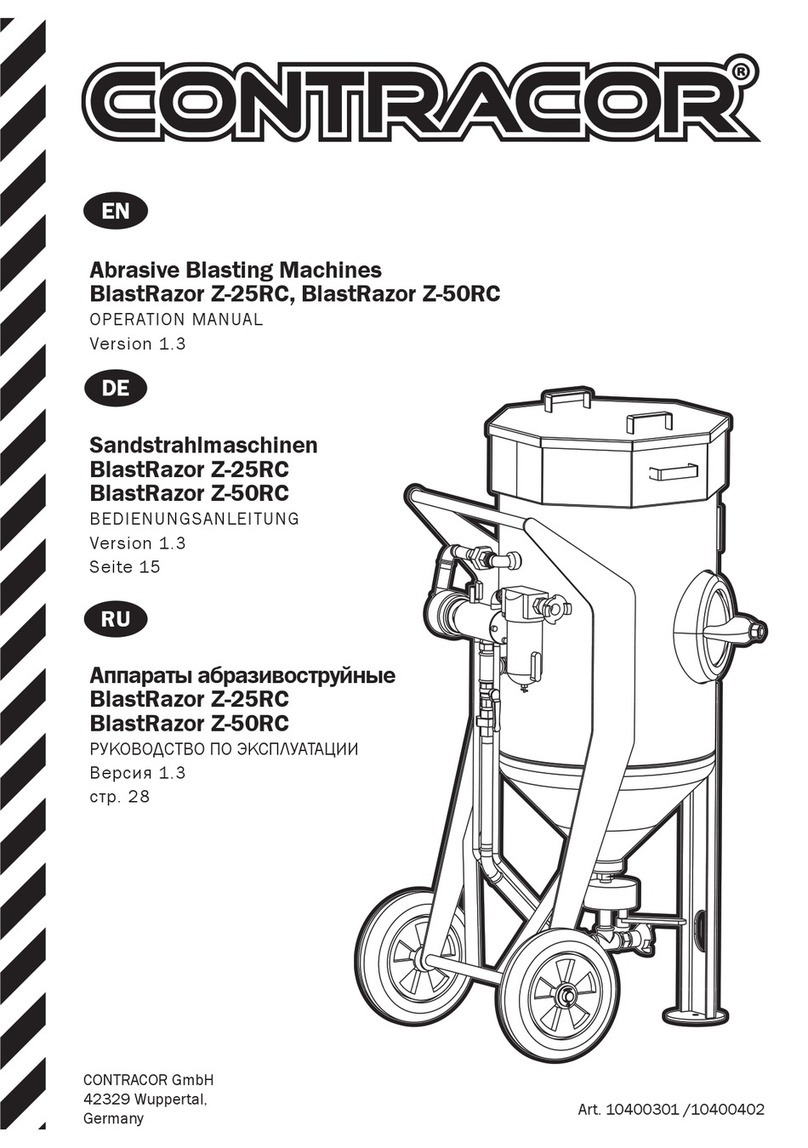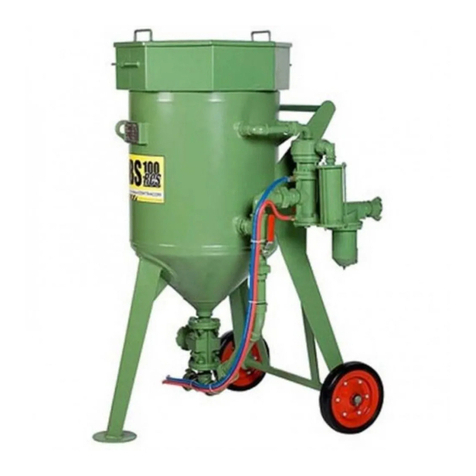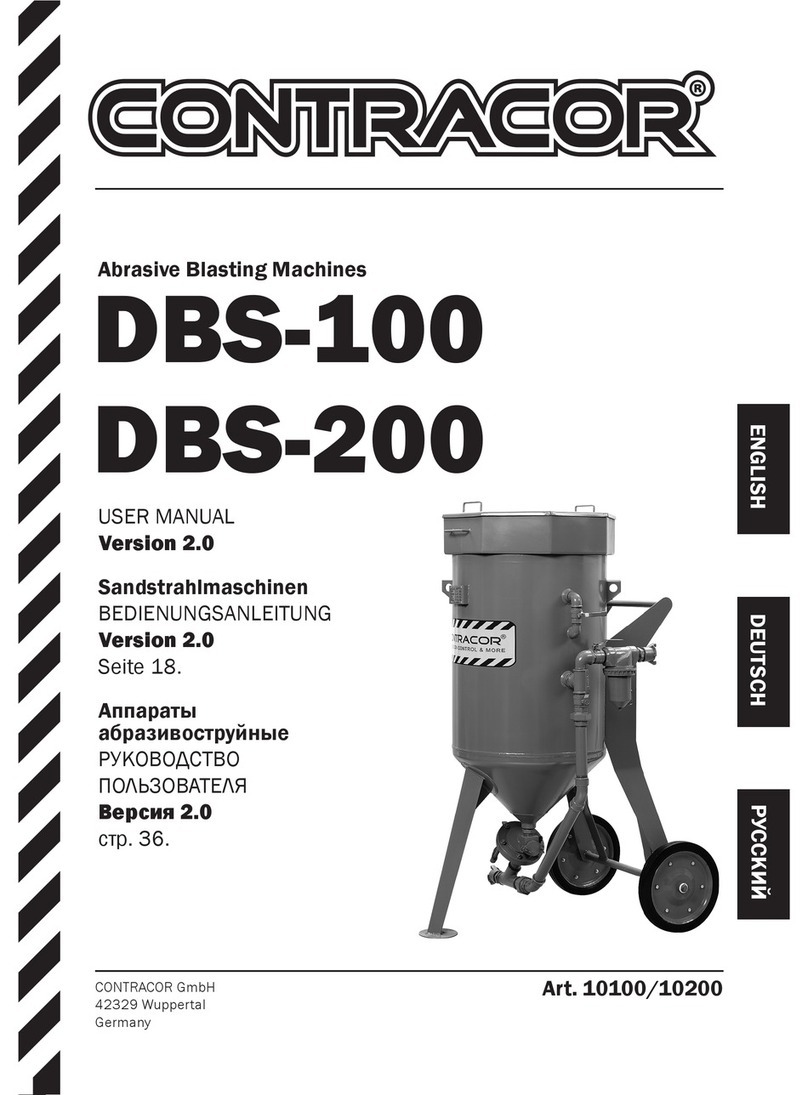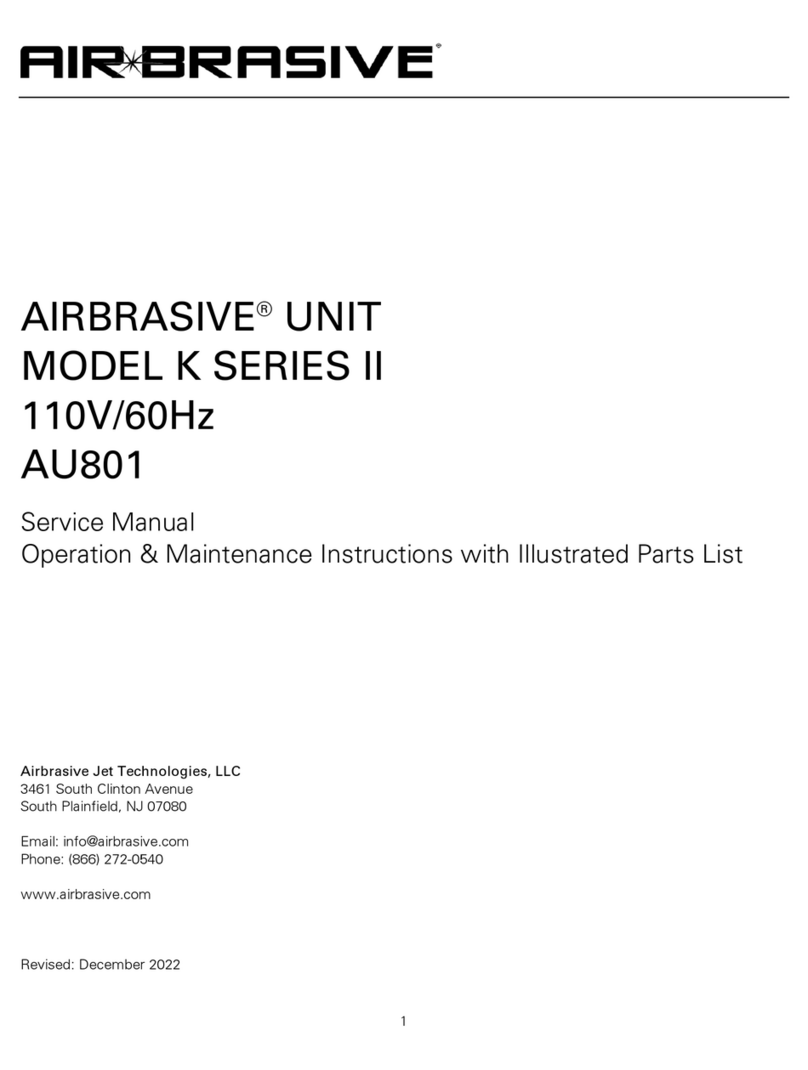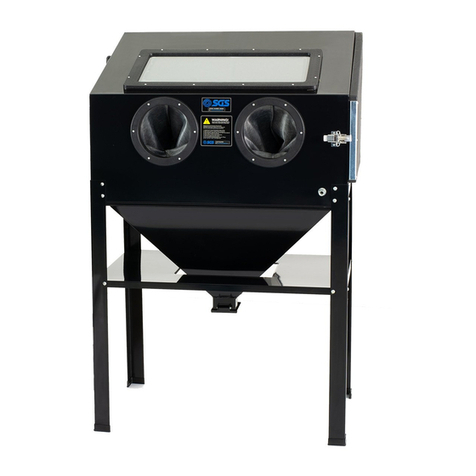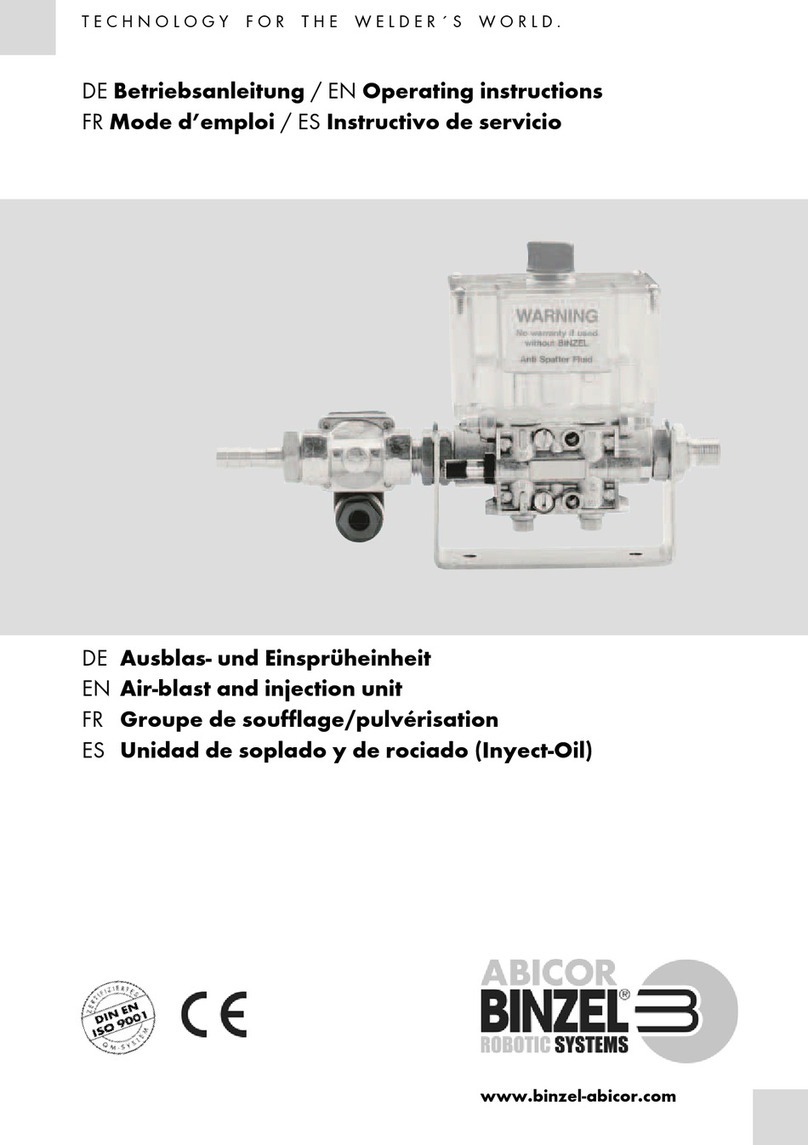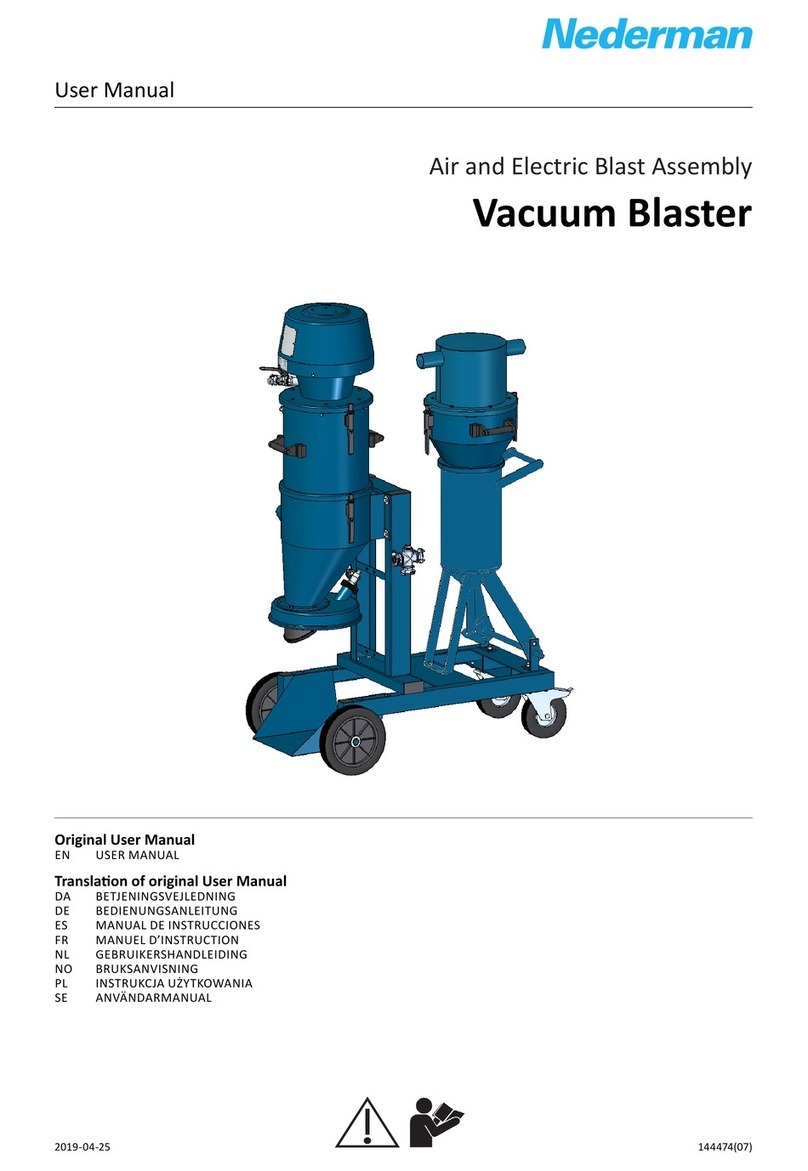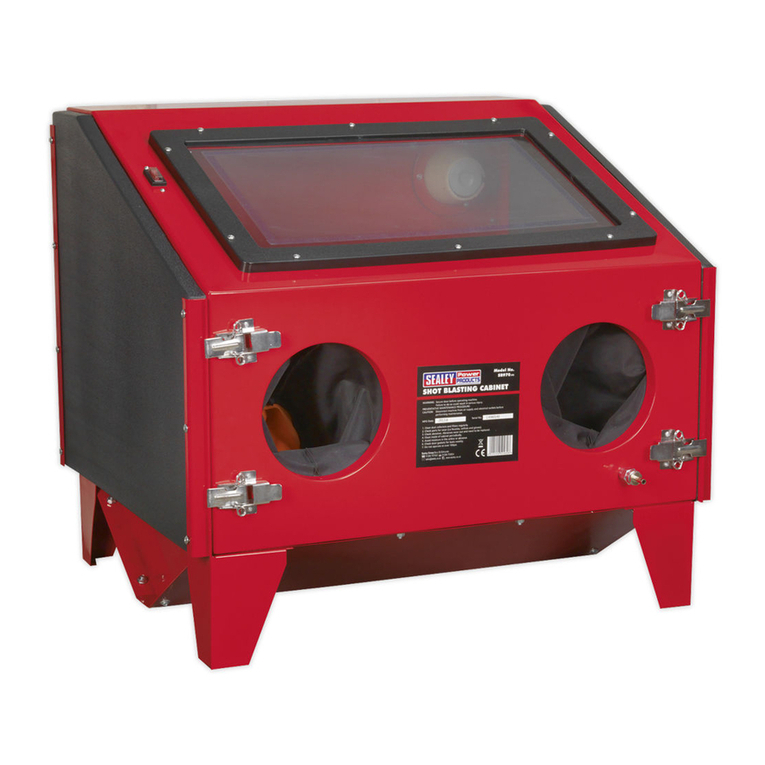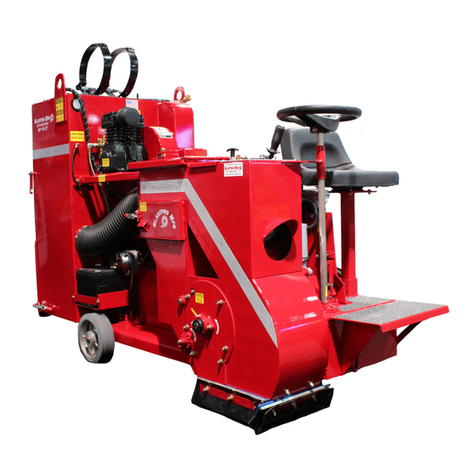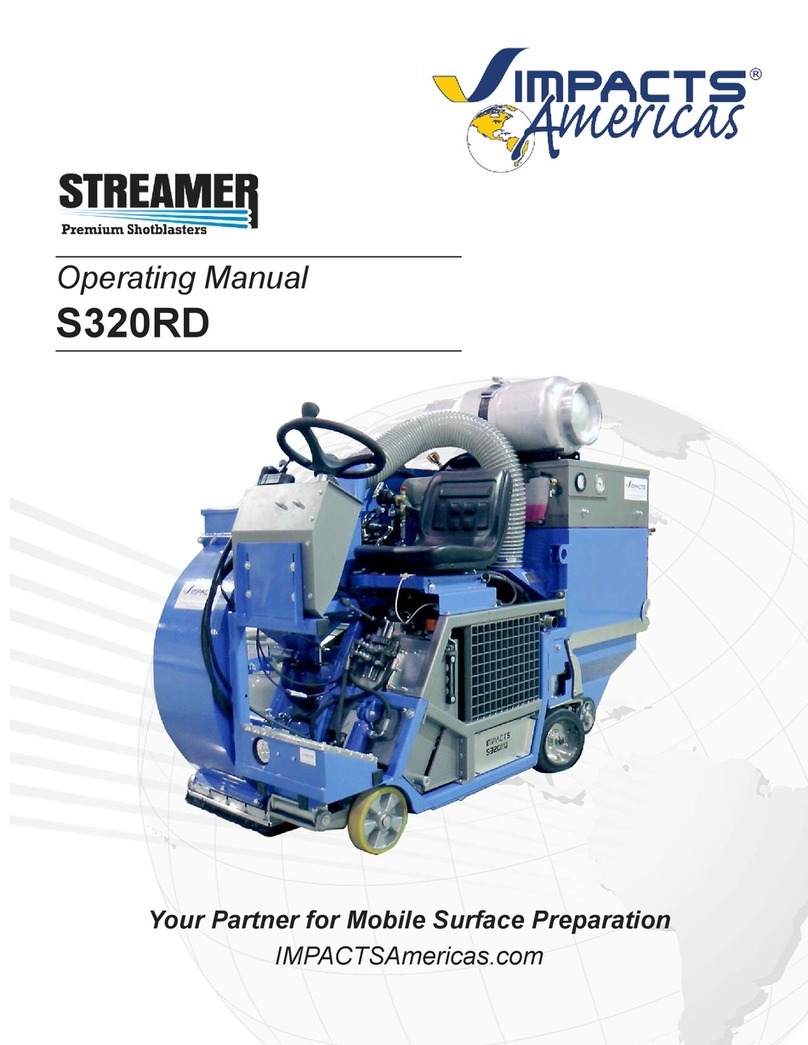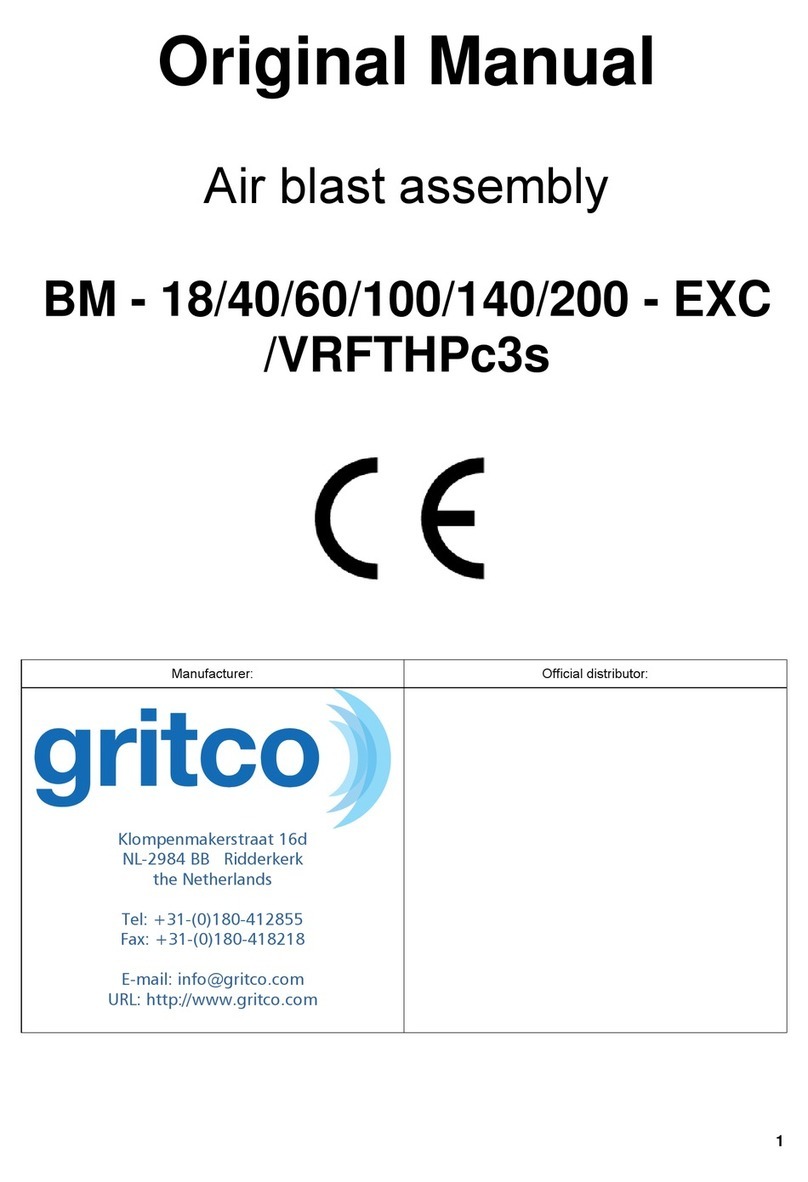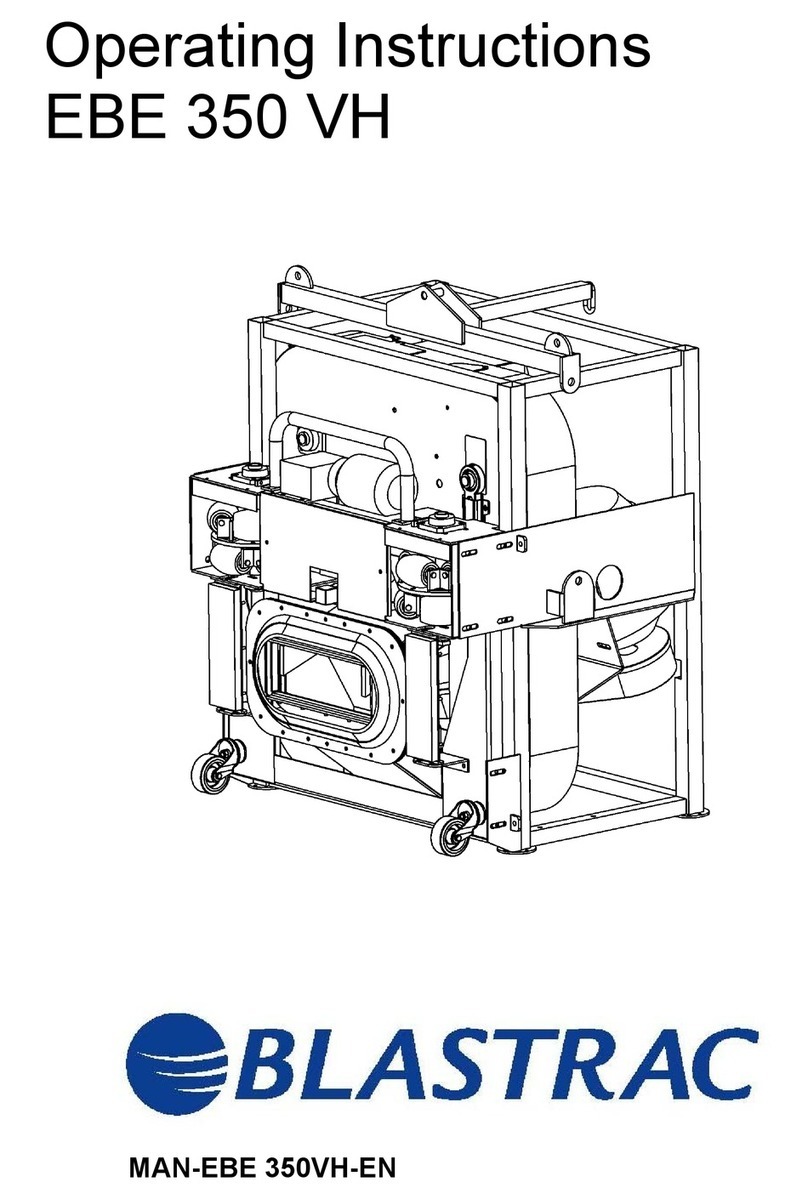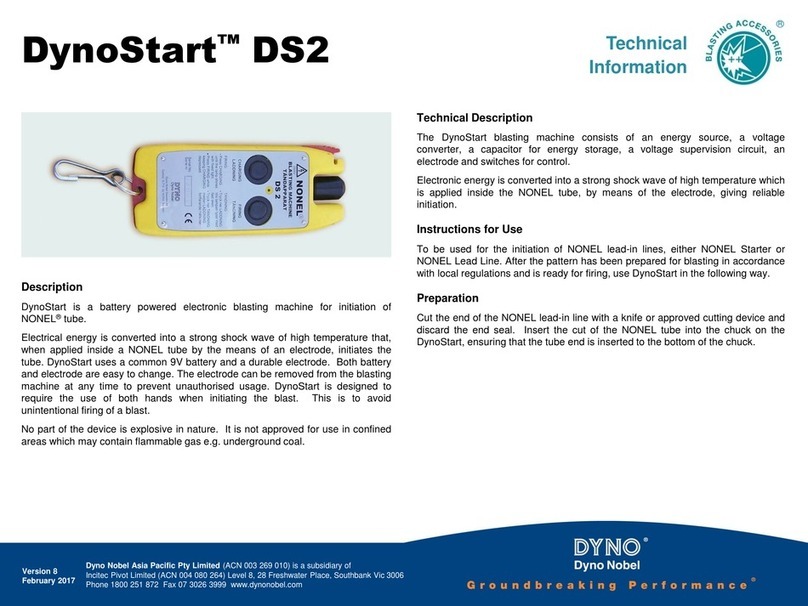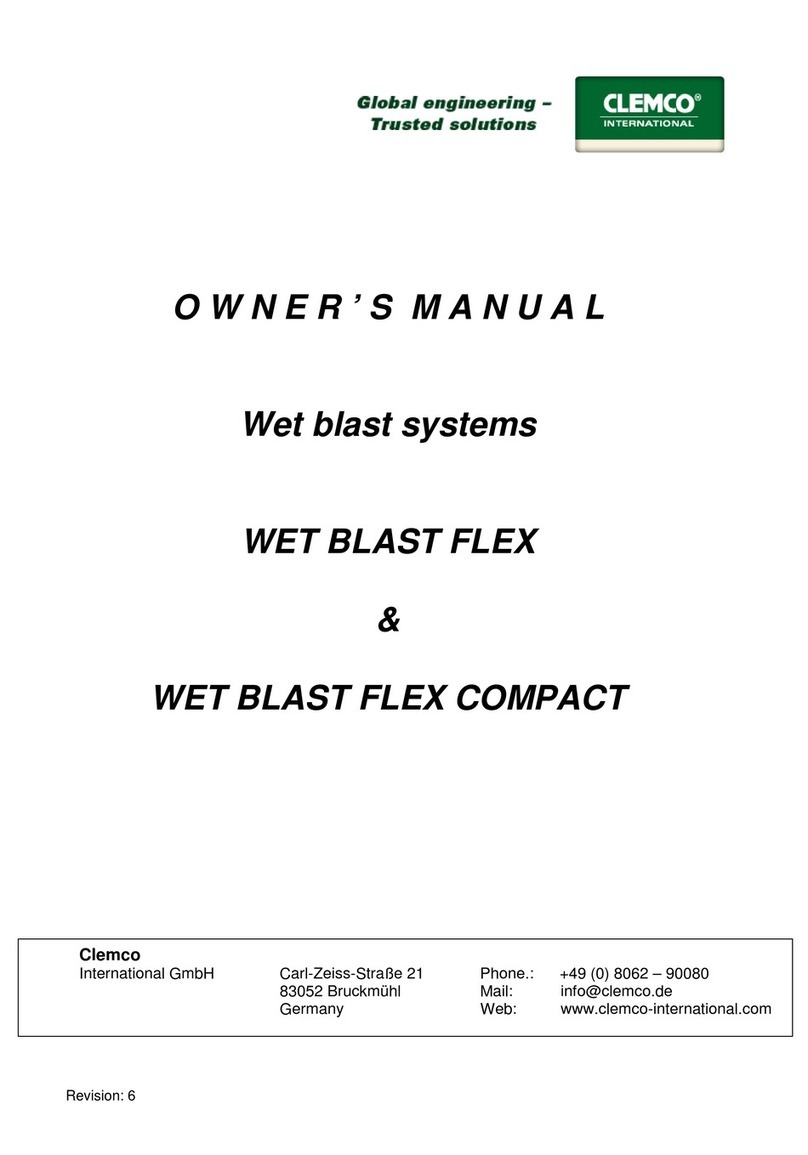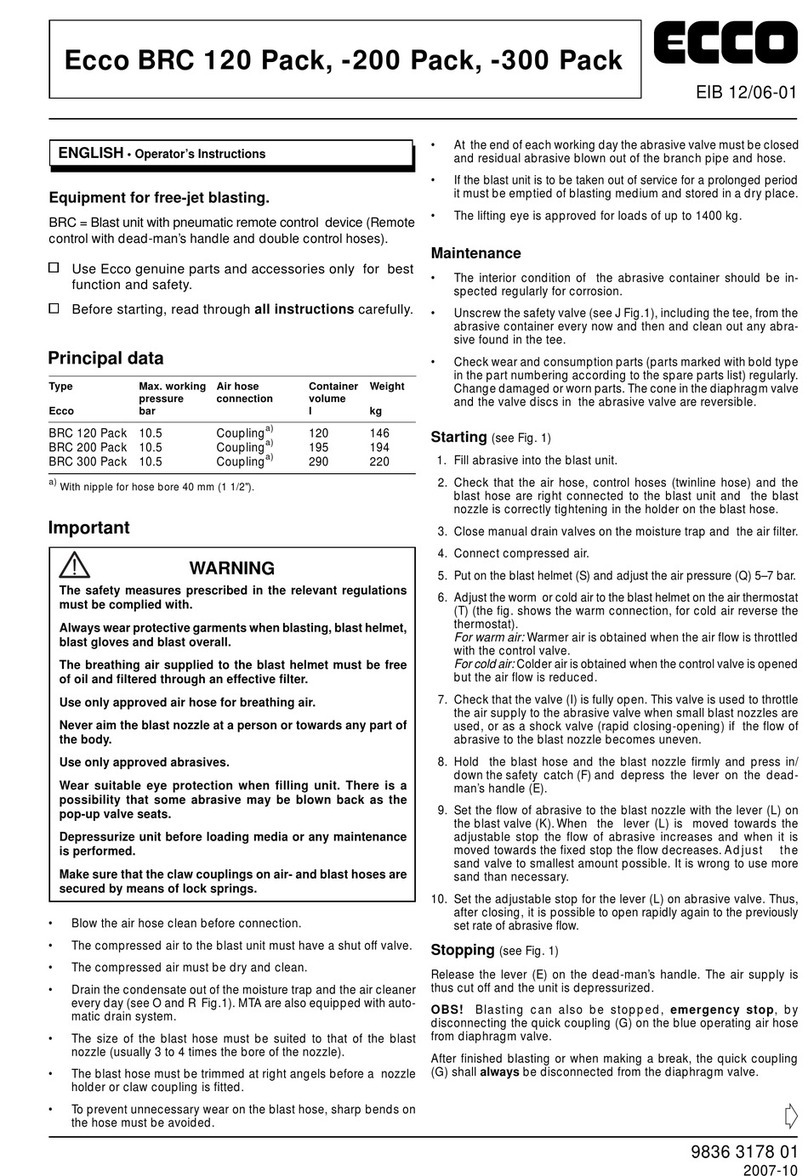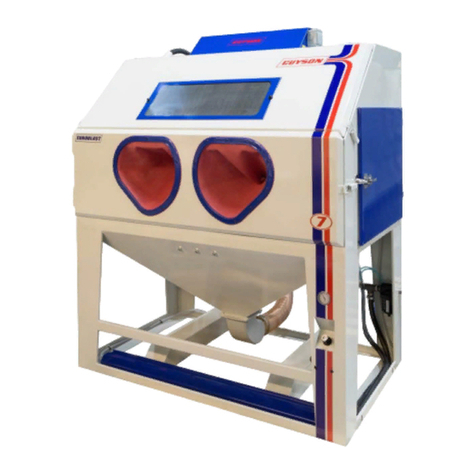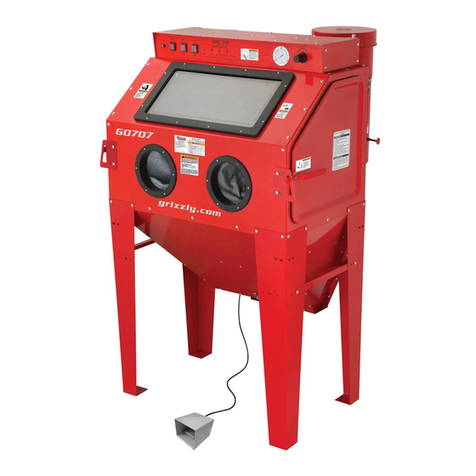
10 CONTRACOR®Version 1.5
5. Maintenance.
5.1. Machine maintenance.
Pressurizing valve replacement.
Open the inspection door of the machine to get access to the pressurizing valve. Screw out
the guide tube with the valve inside. Install a new valve and screw the guide tube back into
its place.
Pressurizing valve ring replacement.
The ring is replaced trough the machine lling orice. Pull out the old ring, put a new ring
into the groove and press it heavily to correct position.
ATTENTION!
USE ONLY ABRASIVE MATERIALS, APPROPRIATE FOR ABRASIVE BLASTING
OPERATIONS.
NEVER USE WET UNSIFTED ABRASIVE MATERIALS.
5.2. Daily maintenance.
1. Check the control valve for water presence. If water is present, check the CAF-3 lter
state.
2. Ensure that the rubber insert of the RC handle is in proper condition. If they look bad
or are worn, replace them, to avoid possible damage.
3. Ensure that hoses and ttings are not worn; and properly xed.
5.3. Monthly maintenance (or after every 160 operation hours).
1. Ensure that the mufer and its pipe are in proper condition.
2. Ensure that there is no leak in all air connections.
3. Dismantle the control valve following RCV operation manual and check all moving
parts. If they look worn, replace them, to avoid possible damage. Assemble the valve
and lubricate its moving parts with general purpose lube oil.


